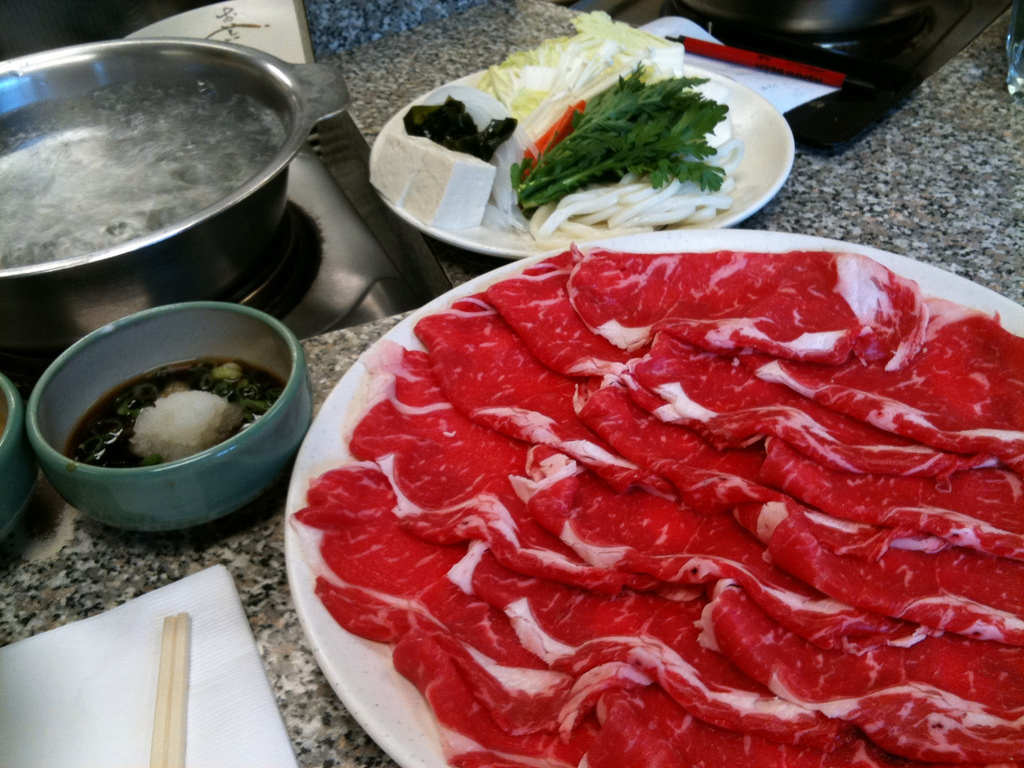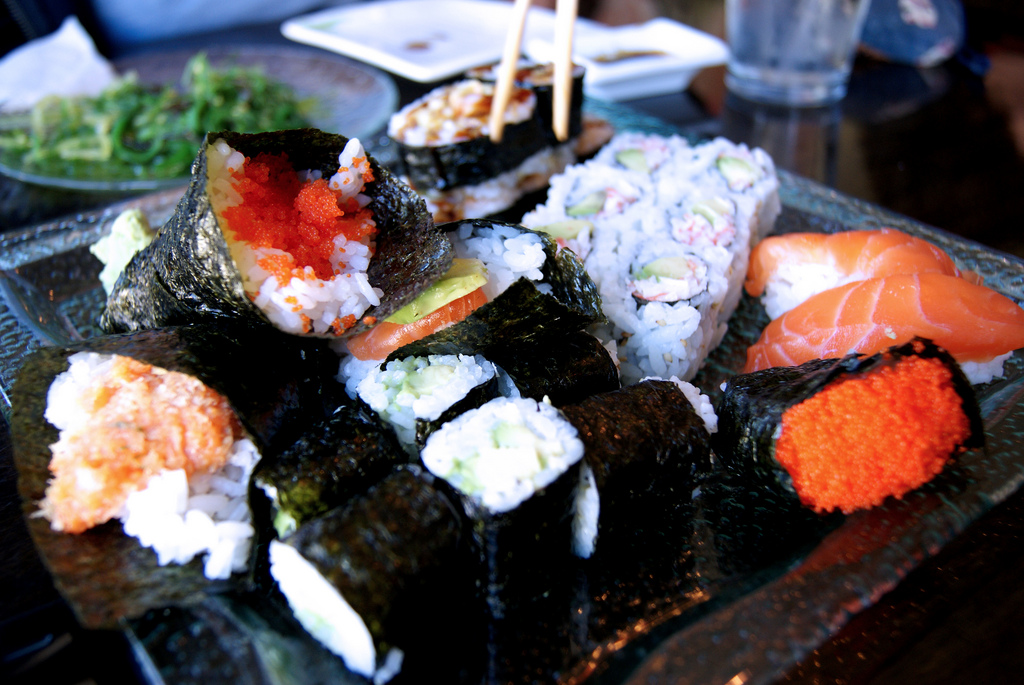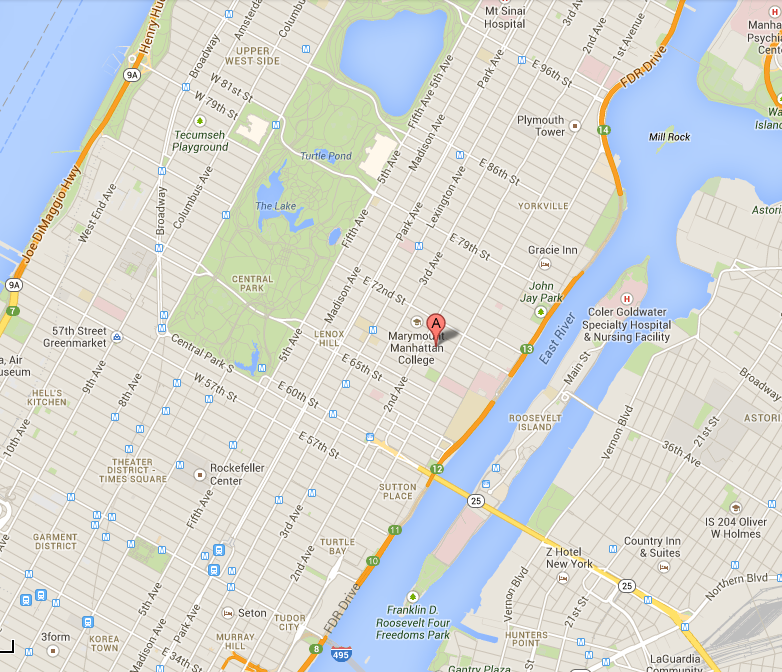Shabu Shabu 70 – The Best Restaurants in NYC
Shabu Shabu 70 is named for East 70th street, where it sits, but it might just as well have been named after the ’70s, because that’s how it feels when you walk in the door. The walls are painted in an off-white so off it’s almost lime green, and it’s the type of paint that dates from the days when people didn’t know lead in paint was a problem. Posters of Japanese movie stars from the ’60s and ’70s cover the walls. There’s a small sake bar up front, lit by paper lanterns, and Christmas lights add festivity to the windows. The archways and exposed beams give it an appearance more closely related to that of an Indian restaurant than to its more-recently-constructed Japanese brethren.
Shabu Shabu 70 has swagger. T-top camaro, farmer’s tan, beer-out-of-a-can swagger. And luckily they can back it up.
Let’s talk Shabu for a moment – that’s why you’re here.
A restaurant called Suehiro, in Osaka, claims credit for inventing the dish (source), itself an adaptation of the centuries-old Chinese “hou guo” (火鍋) hot pot. The Japanese version is much younger, dating from the 20th century, and takes its name from the sound thin-sliced beef makes as it’s stewing, releasing delicious juices, getting ready for a bath in barbecue sauce and straight-shot to my mouth. Both are communal soup pots, placed at the center of a table, into which ingredients – be they beef, vegetables, tofu, or seafood – are dipped and stewed by the customers after being delivered raw to the table.
Shabu/hot pot is available with any number of variations in broth and accoutrements, but Japanese style tends toward simpler broths. At Shabu Shabu 70, the broth starts with only a clear mixture of sake, water, and seaweed. Beef is delivered in big, thick sheets, and two types of dipping sauce – a beige-colored sesame-based sauce and a soy sauce-based concoction – stand ready to intercept ingredients on their journey from soup pot to your mouth. If you’re familiar with Chinese, Thai, or Taiwanese hotpots, you’re struck by the comparative simplicity of ingredients at ’70. But the simplicity has a purpose – to allow the flavor of the top-flight cuts of meat to shine through with minimal obstruction. And the beef is worth the trip. (If you’ve never had shabu before and worry about a bloody red-meat-fest, fear not – hotpots with shellfish, fish paste, shrimp, chicken, and other variations are available, and every platter comes with a generous helping of vegetables, tofu, and yam-derived cellophane noodles.)
Not that shabu is the be-all-end-all. ’70 also boasts an exceptional sushi bar, and the fatty tuna I consistently order as an appetizer is one of the best in the city.
Shabu Shabu 70 makes the mark for best restaurants in the city for its mixture of blue-collar quality and old-Manhattan kitsch. It’s consistently among the top-rated shabu joints in NYC among the critics (NY Mag, Zaggat, etc) but is a bit of a “sleeper” on user-review sites like Yelp. So much the better. Show up after work, nurse a carafe of cold sake at the bar, where if you’re lucky enough the owner will stop by for a chat, follow the host into the well-worn dining room, and get ready for gustatory bliss.



